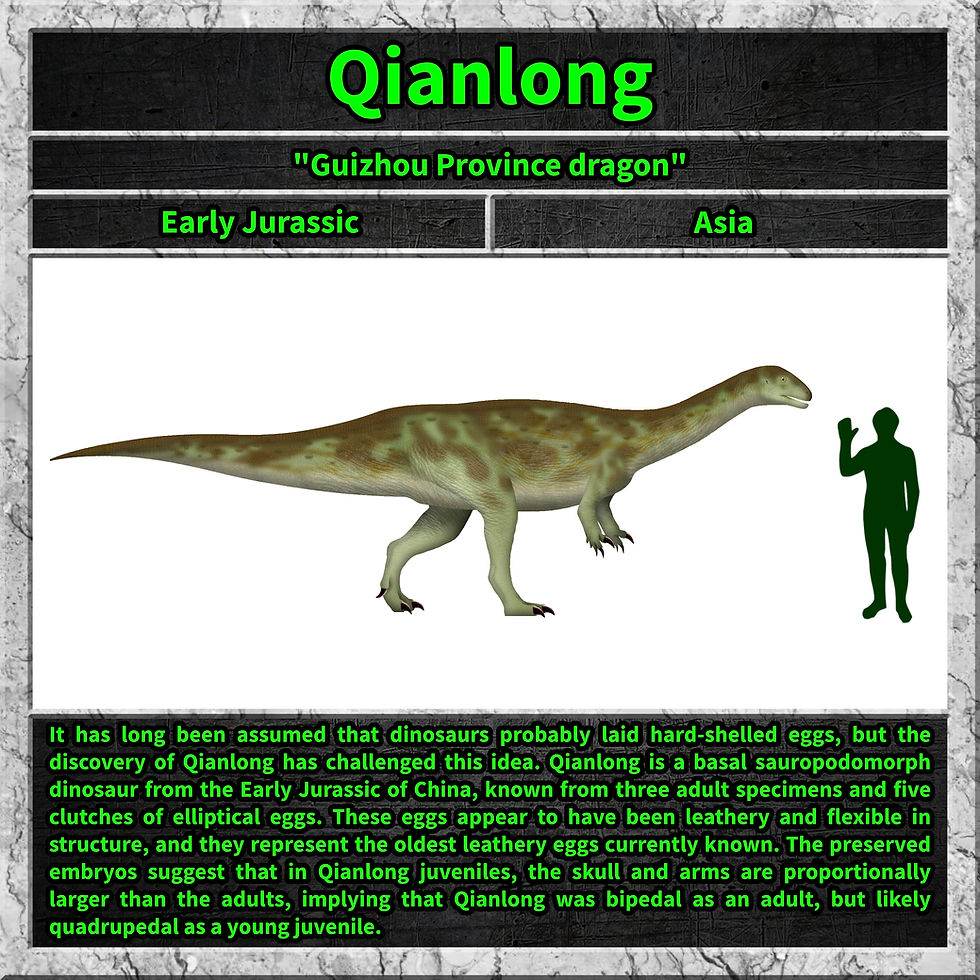Aardonyx
- unexpecteddinolesson
- Mar 3, 2024
- 2 min read
Updated: Aug 23, 2024
MEANING: Earth claw
PERIOD: Early Jurassic
CONTINENT: Africa
Aardonyx is a basal sauropodomorph with many intermediate features between prosauropods and sauropods. It grew to about 6 m in length, and was facultatively bipedal. This means that it would normally walk on two legs, but could move on all fours as well. Its jaws also bear transitional features. They are more narrow than more derived sauropods, but seem to indicate sauropod-like reduced cheeks. This unusual combination of features suggest feeding behavior transitioning toward the bulk-browsing common in later sauropods.

Aardonyx is from the Jurassic. The Jurassic is a geologic period that spanned from the end of the Triassic, 201 million y ears ago, to the beginning of the Cretaceous, 145 million years ago. It is the middle period of the Mesozoic Era. The start of the Jurassic was marked by the major Triassic-Jurassic extinction event. The end, however, has no clear boundary with the Cretaceous. By the beginning of the Jurassic, Pangea had begun rifting into two landmasses: Laurasia and Gondwana, and the climate was warm with no ice caps. Life on land was dominated by dinosaurs, and the first birds appeared, evolving from a branch of theropods. The oceans were inhabited by marine reptiles, while pterosaurs were the dominant flying vertebrates.
Aardonyx is a sauropodomorph. Sauropodomorpha is a group long-necked, herbivorous, saurischian dinosaurs that includes the sauropods and their ancestral relatives. Sauropods generally grew to very large sizes, had long necks and tails, were quadrupedal, and became the largest animals to ever walk the Earth. The prosauropods, which preceded the sauropods, were smaller and often able to walk on two legs. The sauropodomorphs were the dominant terrestrial herbivores throughout much of the Mesozoic Era, from their origins in the Late Triassic until their extinction at the end of the Cretaceous.
Sauropodomorphs had a light, tiny skull on the end of a long neck and a counterbalancing long tail. These adaptations gave them access to high tree foliage. The earliest known sauropodomorphs were small and slender, but by the end of the Triassic, they were the largest dinosaurs of their time, and throughout the Jurassic and Cretaceous they continued growing. They were initially bipedal, but as their size increased they evolved a four-legged gait adapted only to walking slowly on land. The early sauropodomorphs were most likely omnivores as they were only recently diverged from the carnivorous theropods.




